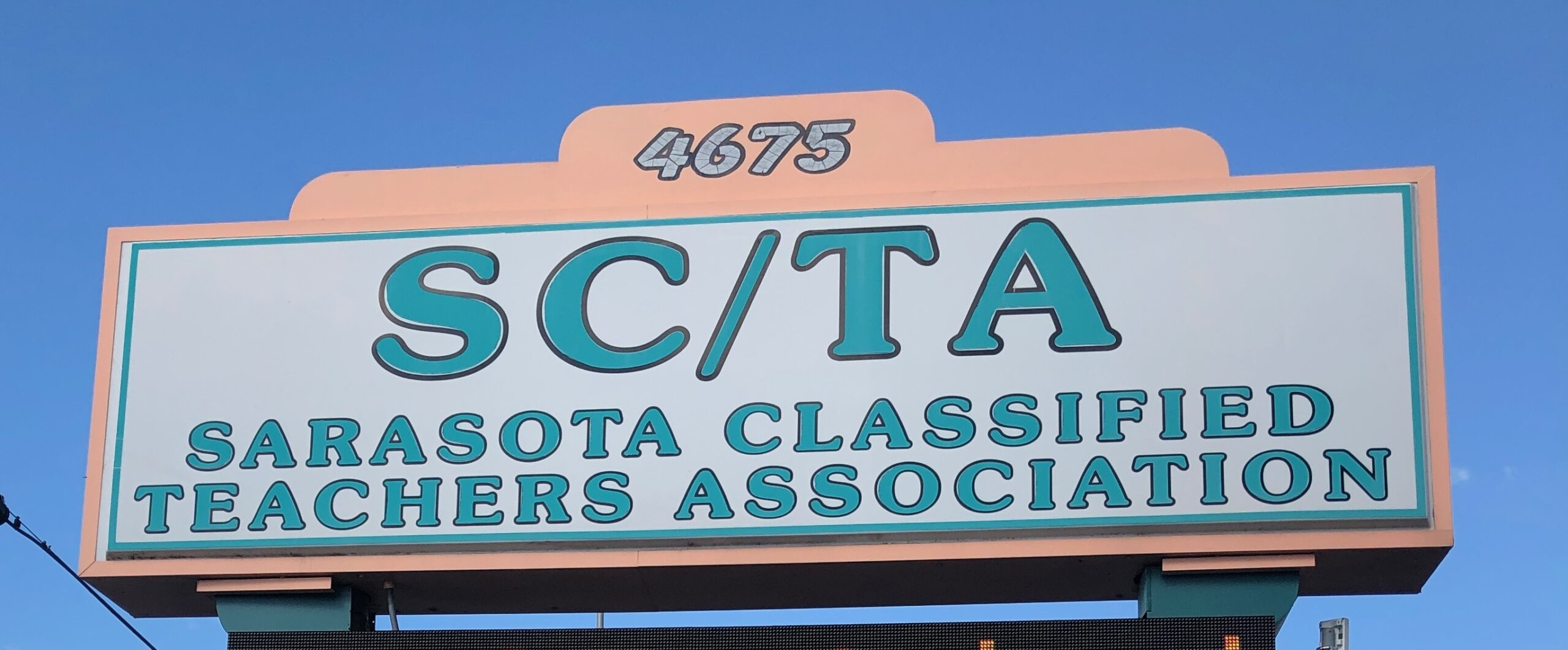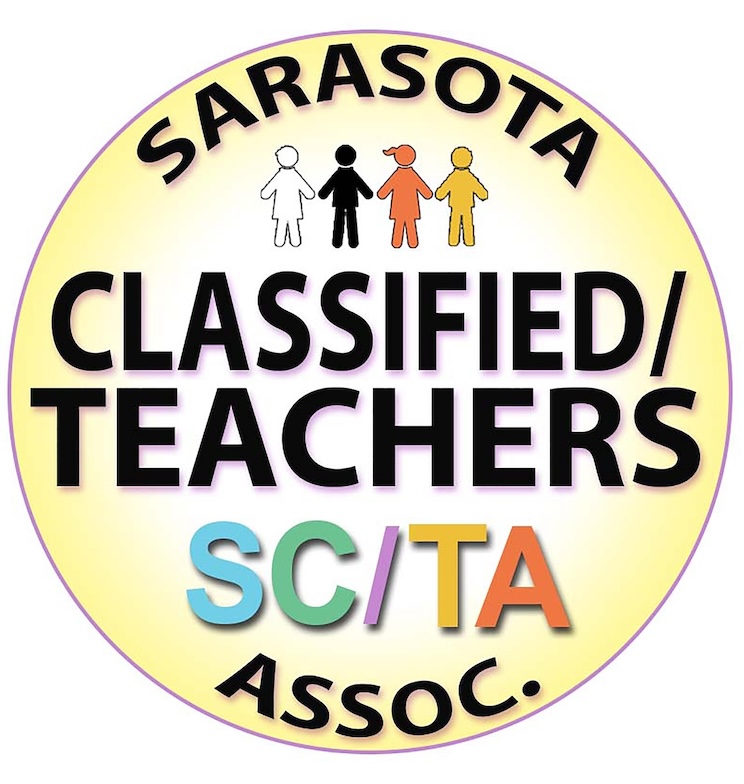What the SC/TA Does

- promotes continuous improvement in instruction and all other student services of all kinds
- encourages ethical practices and policies
- eliminates all forms of bias based on race, religion, color, gender, age disability, sexual orientation, economic status, national origin, or social, political or economic status
- protects the civil rights of all school employees
- encourages public school employee involvement in community affairs
- promotes mutual assistance and cooperation among all public employee organizations
- promotes harmony, mutual respect, cooperation and understanding among the school district’s two bargaining units
- enables members to speak with a common voice to the School Board, community and legal authorities
- negotiates for good working wages and a good quality of work life on matters relating to wages, hours, and terms/conditions of employment
The History of the SC/TA
1942
An early version of the Sarasota Classified/Teachers Association is created when “a goodly representation of Sarasota County teachers met in the Golf Street Auditorium to organize,” according to notes. The teachers group receives its charter from the National Educaton Association (NEA).
1966
The group names itself the Sarasota County Teachers Association and involves the merger of the Negro Teachers Association, the Classroom Teachers Association, and the Sarasota County Education Association.
1979
following a two-year struggle against the administration and School Board, The Sarasota County Teachers Association becomes the Sarasota Classified/Teachers Association, after a two-year organizing effort.
1983
The Sarasota Classified/Teachers Association receives its charter from the American Federation of Teachers (AFT).
1991
The SC/TA overcomes a challenge by the FTP-NEA for its bargaining agent status, earning the support of 71 percent of its members.
1998
The SC/TA becomes an independent labor organization.
2002
The SC/TA collaborates with the Sarasota County School Board and Citizens For Better Schools to earn passage of the one-mill tax referendum to make up for inadequate state funding and help pay for lower class sizes, higher staff salaries, and the reinstatement of many services and programs.
2006, 2010, 2014, 2018, 2022 and 2025
The one-mill tax referendum is renewed, continuing to help fund lower class sizes, higher staff salaries and arts offerings.
